First Launch from Cape Canaveral

The first successful rocket launch occurs at Cape Canaveral. The rocket, Bumper 8, was a captured German V-2 modified with a US Army Corporal second stage.
Cape Canaveral’s location in the southeast is an ideal site for rocket launches in the United States. By launching eastward, rockets are able to take advantage of the linear velocity of the Earth’s rotation. This velocity is greatest towards the equator, making the southern United States preferable. And by launching towards the ocean, away from populated areas, safety downrange from the launch is maximized in case of problems.
Commodore Amiga Introduced
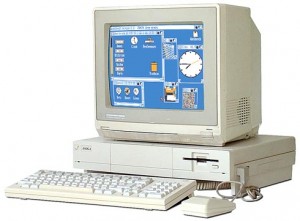
Commodore introduces its Amiga personal computer, also known as the Amiga 1000 or A1000. Featuring a multitasking, windowed operating system, color graphics, and stereo sound among other features ahead of its time, the Amiga developed a loyal user following that remained strong even as the PC market became increasingly consolidated between the dominant IBM-compatible PCs and Apple Macintosh computers.
In 1994, Byte Magazine would write, “The Amiga was so far ahead of its time that almost nobody — including Commodore’s marketing department — could fully articulate what it was all about. Today, it’s obvious the Amiga was the first multimedia computer, but in those days it was derided as a game machine because few people grasped the importance of advanced graphics, sound, and video.”
First Ford Model A Sold
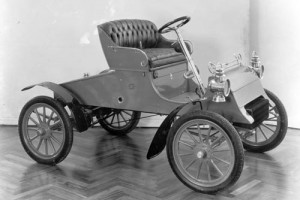
Ford sells its first Model A car to Ernst Pfenning of Chicago, Illinois. This was Henry Ford’s 3rd attempt at creating a company that manufactured cars, incorporating just over a month earlier. The initial $28,000 investment was down to $300 before this first Model A was sold. However, it was the Model T that solidified Ford’s standing in automotive history.
The Unholy Alliance is Born
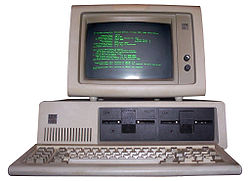
Representatives from an IBM facility in Boca Raton, Florida, where a small group of engineers were secretly developing the IBM PC, meet with Bill Gates and Steve Ballmer of Microsoft to discuss licensing software and an operating system for the still-developing PC. Not having an operating system to offer IBM, Microsoft will eventually buy the rights to QDOS/86-DOS from Seattle Computing Products, which they in-turn license to IBM as PC-DOS, and later license to PC clone makers as MS-DOS. This alliance between IBM and Microsoft forms one of the most dominant platforms in the history of computing, which goes on to crush nearly all other PC platforms in the 80’s and 90’s. Ironically this platform nearly crushes IBM itself as they lost control of the platform to PC clone makers and Microsoft.
Apple Introduces iBook Laptop

Apple introduces the iBook laptop, the first mainstream computer designed and sold with built-in wireless networking.
The Eagle Has Landed
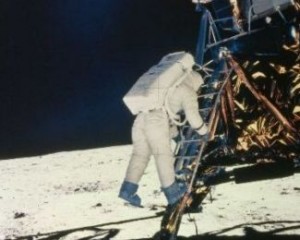
Eagle, the Apollo 11 Lunar Module, successfully lands in the area of the Moon known as the Sea of Tranquility. Upon landing, Neil Armstrong utters the now famous phrase, “The Eagle has landed.” About six hours later, while setting foot on the Moon, he utters the even more famous phrase, “That’s one small step for man. One giant leap for mankind.“
Mac Cube Introduced
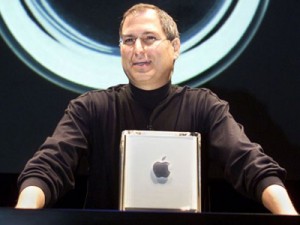
Apple introduces the G4 “Cube” Power Macintosh. At the time of introduction, it was one of the smallest desktop computers ever produced. While not considered a commercial success, it did find a small, dedicated following and it was a foreshadowing of future Apple designs.
Intel Founded

Robert Noyce, Andy Grove, and Gordon Moore incorporate Intel in Santa Clara, California to build microprocessors. Their first processor, the 4004, was released in 1971 for use in calculators. IBM’s choice of Intel’s 8088 processor for use in the IBM PC led to Intel’s emergence as the premier manufacturer of processors still to this day.
🥳 Happy World Emoji Day! 🌎🎉📅
July 17, 2014
Jeremy Burge, founder of Emojipedia, creates World Emoji Day, a celebration of emojis, the now ubiquitous icons we use in text communication to visually represent emotional cues. Burge chose the date of July 17th because Apple’s emoji for calendar displays July 17, in reference to the date that Steve Jobs originally introduced Apple’s iCal software.
World Emoji Day has become so popular that it has influenced the design of the calendar emoji on other platforms. Originally, companies other than Apple used a variety of dates on their calendar emoji. As World Emoji Day grew in popularity, the various dates caused confusion. So as of the writing this article in 2023, most major platforms now display July 17 on their calendar emoji. Microsoft and Facebook being notable exceptions 📅🙄
Apple Introduces iCal 📅

July 17, 2002
Steve Jobs introduces Apple’s now ubiquitous calendaring software, originally named iCal, for Macintosh computers. At the time, it was an innovative advancement in calendaring software for the Mac, allowing internet sharing of calendar data and letting users manage multiple calendars. It also took advantage of the then-new Apple iSync technology to sync their calendars to Bluetooth-enabled mobile phones, PalmOS devices, and the Apple iPod so users could access their calendars on the go.
iCal became a mainstay for Mac users but it achieved mainstream usage starting with the release of the iPhone in 2007. Since the operating system of the iPhone (called iPhone OS at the time, later renamed iOS is 2010) is at its core identical to the Mac OS X operating system, much of the software that runs on the Mac OS can easily be ported to the iPhone, iCal included. Apple, however, called the iOS version simply “Calendar”. Apple renamed iCal on the Mac OS to match the iOS name in 2012 with the release of Mac OS X Mountain Lion.
Originally released as free standalone download, iCal was not actually available until September of that year and then bundled as part of the Mac OS in the next year. However the date of July 17th has become very important in technology history because it was used as the basis of World Emoji Day, started in 2014. This date was chosen because the emoji that Apple created to represent a calendar has always shown the date July 17th, in recognition of the date that the original iCal software was introduced.

